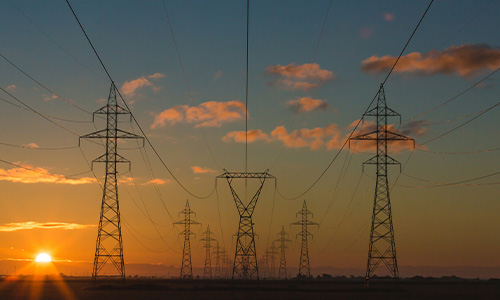
Since Zero Surge introduced series mode surge protection in 1989, there have been significant changes in the quality and distribution of power due to advancements in technology, shifts in energy policies, and evolving consumer demands. One might think that surge protection is no longer as important, but that is not the case.
First, let’s look at some changes in the power quality industry over the last 30 years:
1. Renewable Energy Integration: One of the most notable changes has been the increased integration of renewable energy sources such as solar, wind, and hydroelectric power into the grid. While renewable energy sources are beneficial for reducing carbon emissions, their intermittent nature can impact grid stability and power quality.
2. Smart Grid Technology: The introduction of smart grid technology has revolutionized power distribution and management. Smart grids utilize advanced sensors, meters, and communication networks to monitor and control the flow of electricity in real-time, optimizing efficiency and reliability.
3. Energy Storage Solutions: The development of energy storage technologies, such as lithium-ion batteries, has improved the overall stability and reliability of power grids.
4. Microgrids and Distributed Generation: The rise of microgrids and distributed generation systems has decentralized power generation and distribution, leading to more resilient and adaptive energy networks.
5. Digitalization and Automation: Advances in digitalization and automation have transformed the monitoring, control, and management of power systems.
6. Electrification of Transportation: The growing adoption of electric vehicles (EVs) has spurred investments in charging infrastructure and grid modernization efforts.
7. Consumer Empowerment and Energy Efficiency: Smart meters, home energy management systems, and demand-side management programs enable consumers to monitor and control their energy usage, ultimately contributing to improved power quality and grid stability.
Despite some improvements in power quality, surge protection is still required for several reasons:
1. Natural Events: Power lines are susceptible to voltage surges caused by natural events such as lightning strikes and power fluctuations in the electrical grid. These events pose a risk to sensitive electronics.
2. Man-Made Events: Surges can also be caused by man-made events such as power grid switching, equipment malfunction, or sudden changes in electrical load. These events can occur unexpectedly and result in voltage spikes that may damage connected devices if not adequately protected.
3. Equipment Vulnerability: Despite improvements in power quality, many electronic devices remain vulnerable to electrical surges. Components such as microprocessors, integrated circuits, and sensitive electronic circuits can be damaged or degraded by even small surges.
4. Financial Loss and Downtime: Damage to electronic equipment due to power surges can result in financial losses for businesses and individuals. In addition to the cost of repairing or replacing damaged equipment, downtime associated with equipment failure can disrupt operations and productivity.
5. Liability Concerns: In some cases, property damage or personal injury resulting from power surges may lead to liability issues for property owners or businesses. Surge protection measures help mitigate these risks by reducing the likelihood of equipment damage and associated liabilities.
6. Insurance Requirements: Some insurance policies may require or recommend the installation of surge protection devices as a condition for coverage. Implementing surge protection measures can help property owners meet insurance requirements and potentially lower insurance premiums by reducing the risk of equipment damage.
7. Peace of Mind: Surge protection provides peace of mind for homeowners, businesses, and facility managers by safeguarding valuable electronic equipment against unexpected surges. Investing in surge protection devices helps ensure the long-term reliability and performance of sensitive electronics.
In summary, while advancements in power quality management have led to improvements in the reliability and stability of electrical grids, the need for power line surge protection remains significant to protect against both natural and man-made surges. Implementing surge protection measures is essential to safeguard electronic equipment, mitigate financial risks, and ensure uninterrupted operations for homes, businesses, and critical infrastructure.

